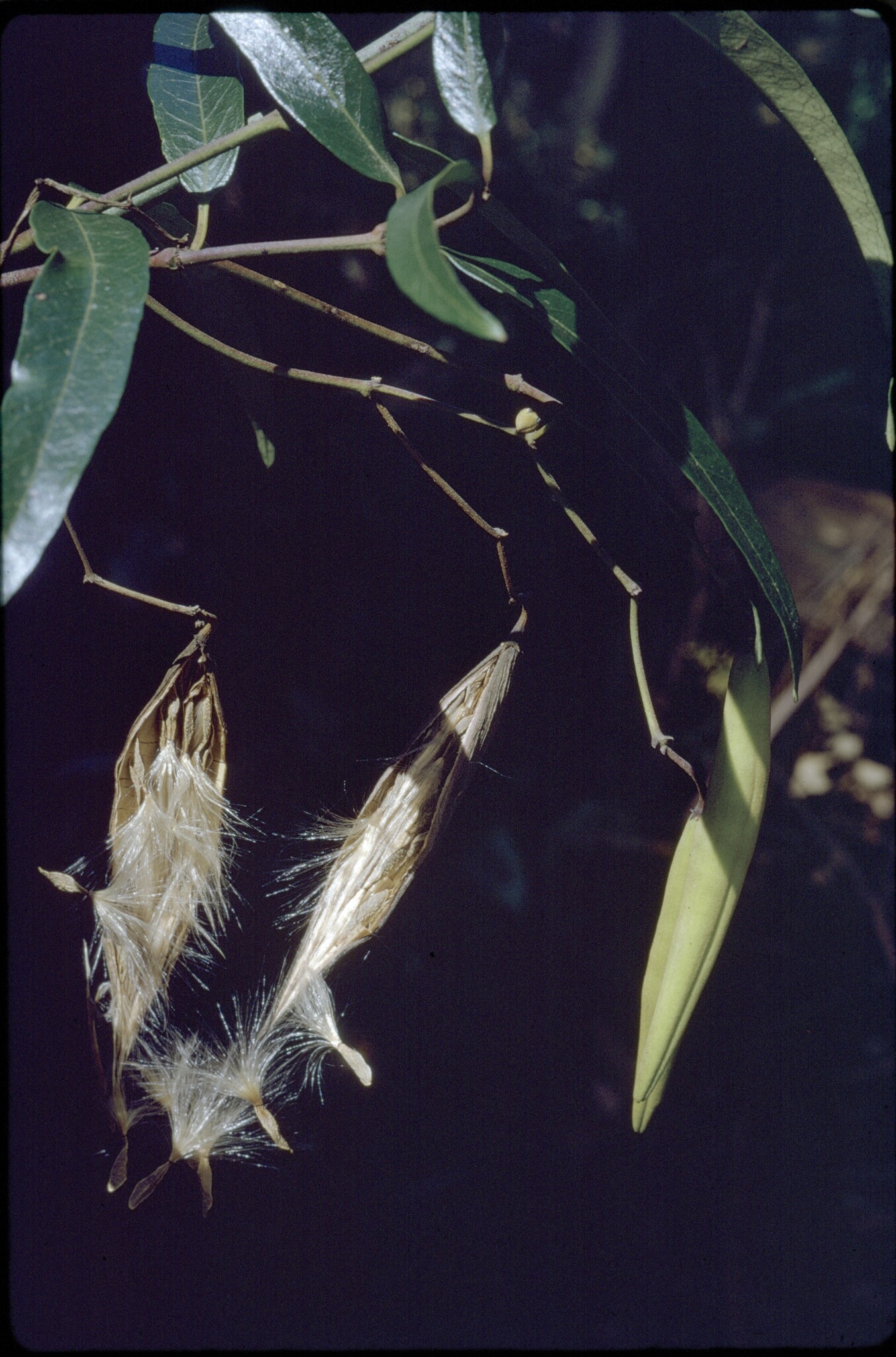
Named for James Parsons (1705–70), a London doctor, author of works on pharmacology and seeds.
Twiners or lianas, evergreen; latex clear or white. Stems wiry to woody, without spines. Leaves opposite, stalked; blade well developed; colleters absent at base. Inflorescence axillary, cymose or paniculate. Flowers slightly to strongly scented, stalked. Corolla bell-shaped to subrotate; tube cylindrical, often expanded towards mouth; lobes convolute in bud, overlapping to the right. Corolline corona usually absent. Stamens partly or fully protruding, attached near base of tube, converging around and sticking to style head. Disk of scales present. Fruit a capsule, dehiscent into 2 valves. Seeds numerous, oblong to ovoid, not winged, comose at micropylar end.
Two species are occasionally grown. Many species have potential for cultivation and several are important as butterfly host plants.
Tolerant of mild frosts.
Cuttings or seeds.
Twiners or lianas with opposite leaves; anthers protruding, forming a cone around the style head and sticking to it.
About 130 species in SE Asia, Malesia, New Guinea, Melanesia, New Zealand and Australia (35 species).
Williams (1996).
Source: (2002). Apocynaceae. In: . Horticultural Flora of South-eastern Australia. Volume 4. Flowering plants. Dicotyledons. Part 3. The identification of garden and cultivated plants. University of New South Wales Press.
